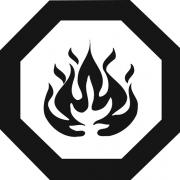CCCR Label vs. CPSC: Can one label be compliant in both Canada and the US?
By: Ashley Thompson, Regulatory Consultant
Many companies would ideally like to have one consumer label that is compliant in both Canada (CCCR 2001 label) and the US (CPSC label). Is it possible? The short answer is: sometimes. It is often POSSIBLE for a label to be compliant in both countries, but there can be hurdles and restrictions that make this difficult to accomplish.
The most obvious challenge is that the label must be large enough to have room for all Canadian (English and French CCCR Label) and American (CPSC label) requirements. Even if there is enough space, companies often don’t want their label to be covered in cautionary information, possibly making the product look more hazardous than it is; and deterring consumers from purchasing it.
Another roadblock occurs when the product is classified differently under Consumer Chemicals and Containers Regulations, 2001 (CCCR, 2001) and the Consumer Product Safety Commission (CPSC). For example, a liquid non-aerosol product with a flashpoint of 62˚C is non-flammable under CCCR (the cut-off is 60˚C), and combustible under CPSC (the cut-off is 65.6˚C). There are solutions to some of these differences, though they are not always aesthetically pleasing.
 In addition to differences in classification, CCCR requires specific symbols to be present for many classes, and these symbols are unfamiliar to the American market.
In addition to differences in classification, CCCR requires specific symbols to be present for many classes, and these symbols are unfamiliar to the American market.
If you want to know if your label can be compliant in both Canada (CCCR label) and the United States (CPSC label), contact us at Nexreg for a Consumer label review. We will classify your product under CCCR and CPSC and let you know if a unified label is possible. After your label is complete, we will have a look to make sure you have included all necessary elements for a compliant CPSC label or CCCR label.
